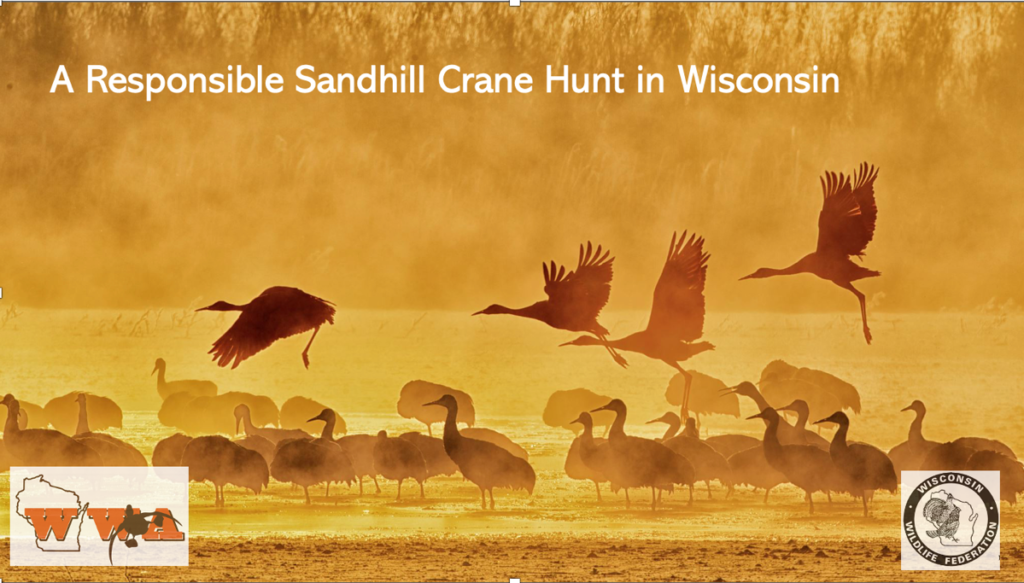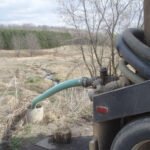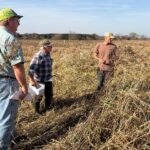 By Bruce Ross, Executive Director bross@wisducks.org
By Bruce Ross, Executive Director bross@wisducks.org
This article originally appeared in Wisconsin Waterfowl Association’s November, 2023 Newsletter edition.
In late October, WWA led a legislative briefing at the State Capitol on issues surrounding the state’s growing population sandhill cranes (SHC).
 You may recall that last legislative session a bill to allow sandhill crane hunting was introduced as a part of a “Sporting Freedom Package.” Unfortunately, its introduction triggered partisan reactions, and the SHC hunting bill never got a floor vote in either house. Even if it had passed, it’s not clear the governor would have signed it.
You may recall that last legislative session a bill to allow sandhill crane hunting was introduced as a part of a “Sporting Freedom Package.” Unfortunately, its introduction triggered partisan reactions, and the SHC hunting bill never got a floor vote in either house. Even if it had passed, it’s not clear the governor would have signed it.
This year, WWA has taken a leadership role in continuing the discussion, joined by Delta Waterfowl, Wisconsin Wildlife Federation, and Safari Club International. Our approach to tamp down partisan, emotional reactions is to educate policy makers on the issues that a growing and unchecked SHC population brings, rather than focusing exclusively on a hunt. This is very consistent with WWA’s approach since taking up this topic three years ago.
 First, it is important that policymakers fully understand that sandhills are managed by the federal government, not individual states. US Fish and Wildlife Service (USFWS) representative David Scott explained the USFWS has successfully managed the crane’s eastern population from the brink of extinction a century ago, to now over 100,000—over three times the minimum population goal.
First, it is important that policymakers fully understand that sandhills are managed by the federal government, not individual states. US Fish and Wildlife Service (USFWS) representative David Scott explained the USFWS has successfully managed the crane’s eastern population from the brink of extinction a century ago, to now over 100,000—over three times the minimum population goal.
There are several complex and intertwined SHC issues that should be considered by policymakers, including:
- The financial impact farmers are experiencing from SHC depredation of their crops and possible solutions.
- The current damage abatement fund that is paid for by each hunter would be insufficient to address the magnitude of today’s crop damage.
- The number of SHC killed each year in Wisconsin under federal depredation permits (1,200 last year alone, nearly 10,000 in the past decade) without hurting the health of the SHC population.
- The impact of a hunting season in Wisconsin would be less than this depredation kill.
- The limited risk to Wisconsin’s whooping crane experiment.
- The anti-hunting sentiment brought by some opponents to a hunt.
While we expected some legislative staff to attend the briefing, we were surprised by the turnout with more than thirty legislative offices represented, including more than one dozen legislators – it was standing room only! See what was presented here.






